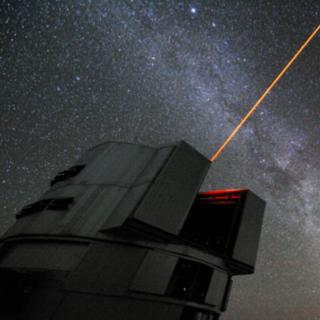Bibcode
Skúladóttir, Ása; Salvadori, Stefania; Amarsi, Anish M.; Tolstoy, Eline; Irwin, Michael J.; Hill, Vanessa; Jablonka, Pascale; Battaglia, Giuseppina; Starkenburg, Else; Massari, Davide; Helmi, Amina; Posti, Lorenzo
Referencia bibliográfica
The Astrophysical Journal
Fecha de publicación:
7
2021
Revista
Número de citas
60
Número de citas referidas
54
Descripción
Although true metal-free "Population III" stars have so far escaped discovery, their nature, and that of their supernovae, is revealed in the chemical products left behind in the next generations of stars. Here we report the detection of an ultra-metal-poor star in the Sculptor dwarf spheroidal galaxy AS0039. With [Fe/H]LTE = -4.11, it is the most metal-poor star discovered in any external galaxy thus far. Contrary to the majority of Milky Way stars at this metallicity, AS0039 is clearly not enhanced in carbon, with [C/Fe]LTE = -0.75, and A(C) = +3.60, making it the lowest detected carbon abundance in any star to date. Furthermore, it lacks α-element uniformity, having extremely low [Mg/Ca]NLTE = -0.60 and [Mg/Ti]NLTE = -0.86, in stark contrast with the near solar ratios observed in C-normal stars within the Milky Way halo. The unique abundance pattern indicates that AS0039 formed out of material that was predominantly enriched by a ~20 M⊙ progenitor star with an unusually high explosion energy E = 10 × 1051 erg. Therefore, star AS0039 represents some of the first observational evidence for zero-metallicity hypernovae and provides a unique opportunity to investigate the diverse nature of Population III stars. * Based on observations made with ESO VLT/X-SHOOTER at the La Silla Paranal observatory under program ID 0102.B-0786.
Proyectos relacionados

Evolución Galáctica en el Grupo Local
La formación y evolución de galaxias es un problema fundamental en Astrofísica. Su estudio requiere “viajar atrás en el tiempo”, para lo cual hay dos enfoques complementarios. El mas extendido consiste en analizar las propiedades de las galaxias a diferentes distancias cosmológicas. Nuestro equipo se concentra en el otro enfoque, denominado
Emma
Fernández Alvar